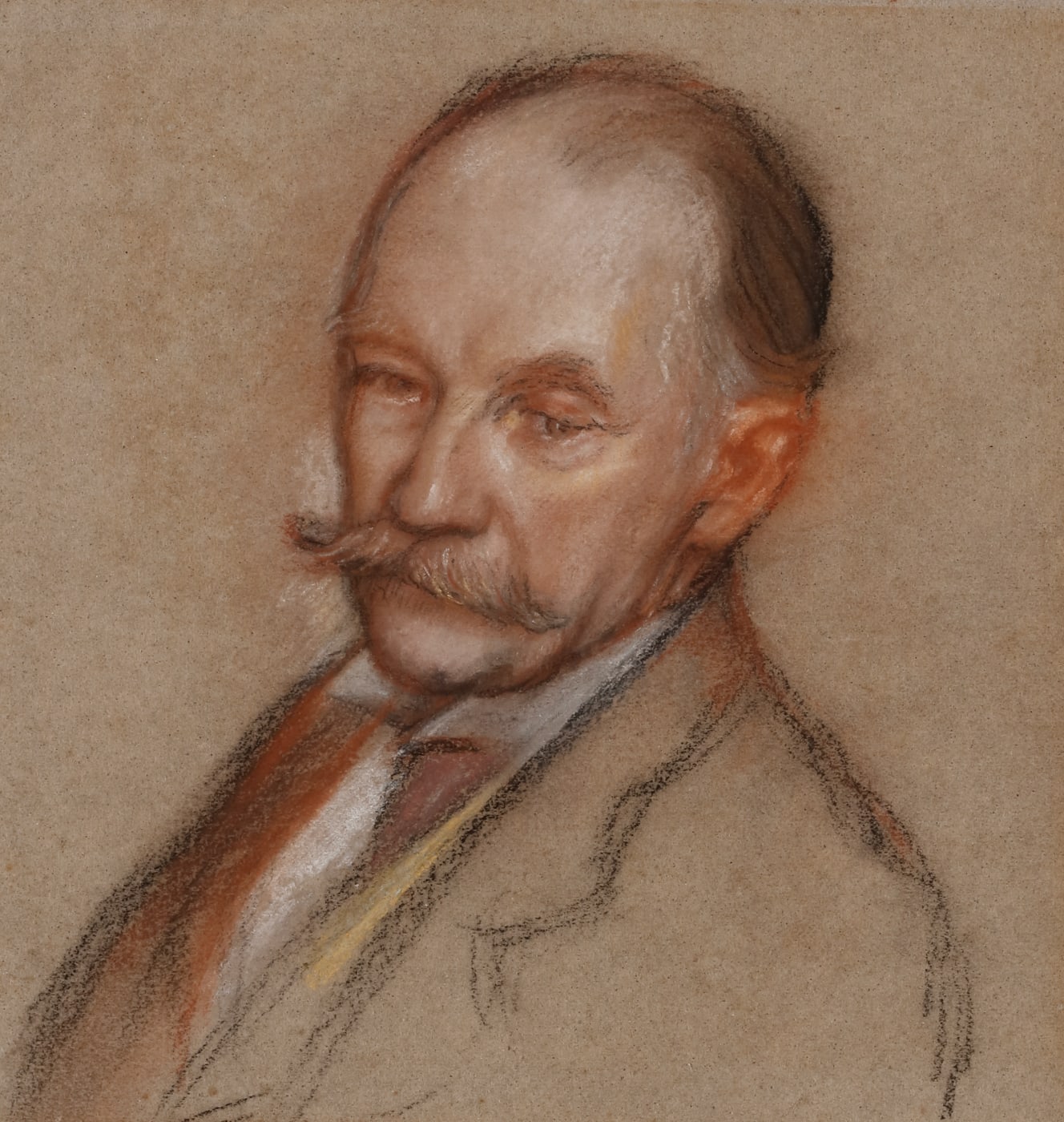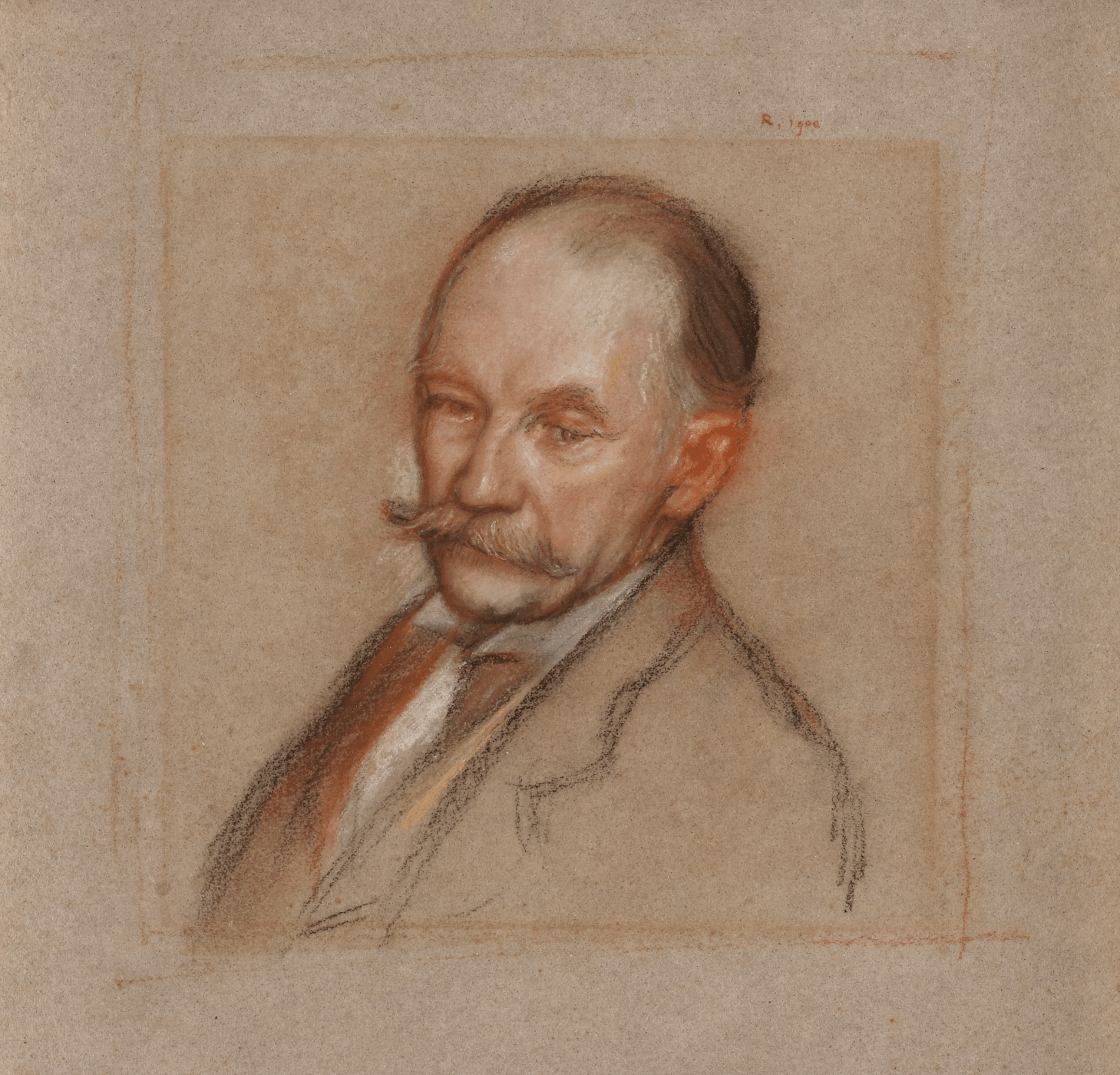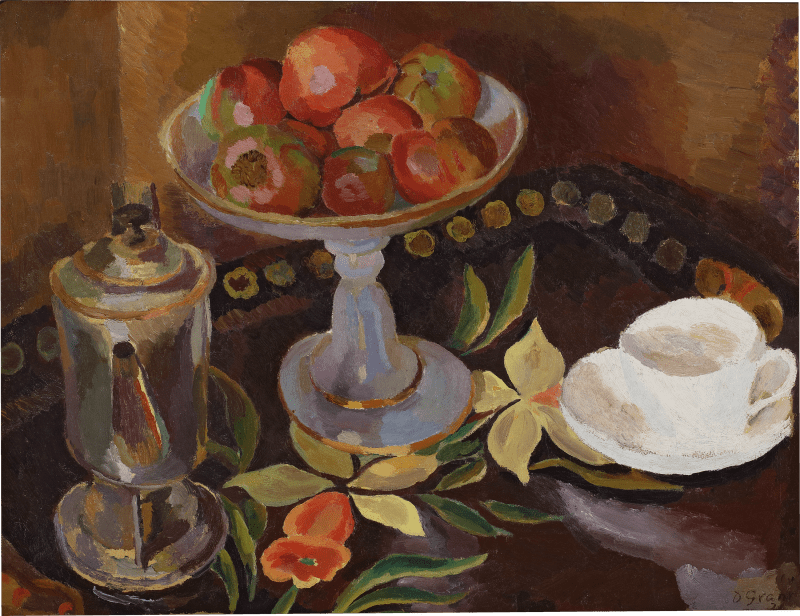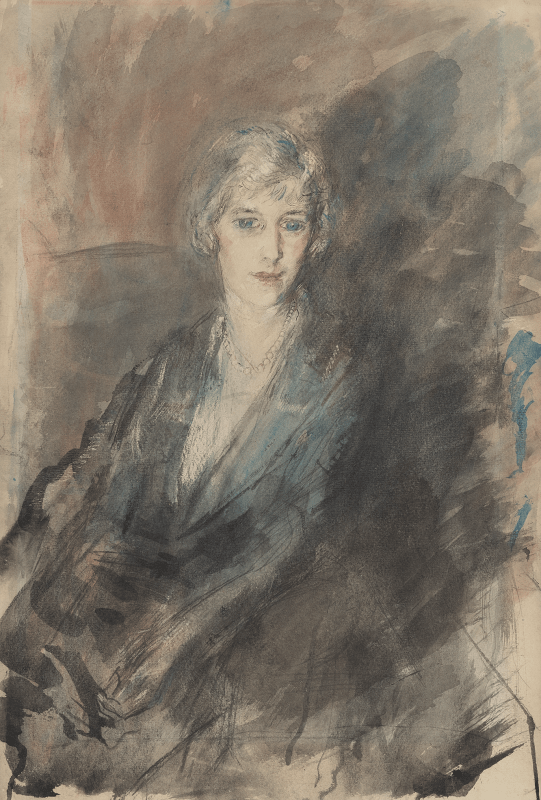Full Biography
Rothenstein was the fifth of six children born into a German-Jewish family in Bradford, following his father's decision to emigrate from Germany to Bradford to work in the expanding textile industry.
He entered the Slade School of Art aged 16 where he was taught by Alphonse Legros, an important teacher in the British etching revival which influenced Rothenstein. The following year he attended the Académie Julian in Paris, where he met and was encouraged by the likes of James McNeill Whistler, Edgar Degas, Camille Pissarro, Oscar Wilde, Walter Sickert, Henri Toulouse-Lautrec and Roger Fry.
On his return to England, Rothenstein had acquired a reputation as a talented artist. He received a commission from the publisher John Lane to produce a volume of lithographic portraits of Oxford personalities, Oxford Characters, to coincide with Max Beerbohm's Caricatures of Twenty-Five Gentlemen both of which were published in 1896. The success of his witty Oxford Characters lead to further volumes, the most notable of which is English Portraits 1898. This volume included portraits of George Gissing, Robert Bridges, A. W. Pinero, Cunninghame Graham, Grant Allen, William Archer, Henry James and Thomas Hardy (a later portrait of Thomas Hardy by Rothenstein in for sale above).
In 1898-1899 he co-founded the Carfax Gallery (or Carfax & Co), which became closely associated with artists such as Charles Conder and Augustus John, and exhibited the work of Augustus Rodin, whose growing reputation in England owed much to his friendship with Rothenstein.
Rothenstein was the fifth of six children born into a German-Jewish family in Bradford, following his father’s decision to emigrate from Germany to Bradford to work in the expanding textile industry.
He entered the Slade School of Art aged 16 where he was taught by Alphonse Legros, an important teacher in the British etching revival which influenced Rothenstein. The following year he attended the Académie Julian in Paris, where he met and was encouraged by the likes of James McNeill Whistler, Edgar Degas, Camille Pissarro, Oscar Wilde, Walter Sickert, Henri Toulouse-Lautrec and Roger Fry.
On his return to England, Rothenstein had acquired a reputation as a talented artist. He received a commission from the publisher John Lane to produce a volume of lithographic portraits of Oxford personalities, Oxford Characters, to coincide with Max Beerbohm's Caricatures of Twenty-Five Gentlemen, both of which were published in 1896. The success of his witty Oxford Characters lead to further volumes, the most notable of which is English Portraits 1898. This volume included portraits of George Gissing, Robert Bridges, A. W. Pinero, Cunninghame Graham, Grant Allen, William Archer, Henry James and Thomas Hardy (a later portrait of the author Thomas Hardy is currently for sale with Philip Mould & Company.)
In 1898-1899 he co-founded the Carfax Gallery (or Carfax & Co), which became closely associated with artists such as Charles Conder and Augustus John, and exhibited the work of Augustus Rodin, whose growing reputation in England owed much to his friendship with Rothenstein.
Determined and hardworking, Rothenstein made a name for himself as a social. In 1910, Rothenstein was outraged at a statement made by Sir George Birdwood, former curator of the Government Museum in Bombay, whilst chairing the Indian Section of the annual meeting at the Royal Society of Arts. Birdwood declared that there was no fine arts in India and that ‘the figure of the Buddha was no more spiritual than a boiled suet pudding’, and at this public declaration Rothenstein was angered and founded an India Society to educate British citizens in Indian arts; he visited India the following winter. His interest in Indian art led to changes in his own painting, exchanging his light and delicate touch for a heavier and richer style.
Rothenstein continued to push the boundaries of British art and experimented in composition by capturing Jewish religious life in east London, persuading the Jews of Spitalfields Great Synagogue to give him access to sketch and paint them during prayer. He produced eight substantial paintings of this Jewish community, three of which are currently unaccounted for.
In 1917, Rothenstein was appointed Official War Artist and became known for his barren landscapes of the destruction at Flanders, featuring smouldering tree stumps and smoky horizons. From this position Rothenstein strongly and successfully urged the appointment of Paul Nash to the war artist scheme, who later became one of the most important and highly regarded war artists of all time.
Rothenstein is now best known for his portraits of famous individuals and his war paintings. He died in 1945 at his home in Gloucestershire, where he had lived with his wife for over thirty years.












